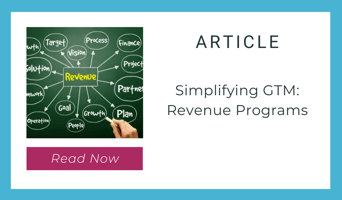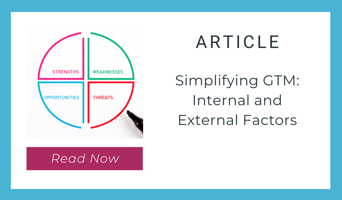Revenue Program factors take into account your ability to build go-to-market programs aligned with...
Simplifying Go-to-Market: Portfolio Planning
Portfolio Planning factors take into account your ability to connect your business plans with the teams that develop, promoted, and deliver solutions to the market. Below, we give a brief overview of seven components of go-to-market that make up this category.
Positioning
Description of the product and/or service by its ability to solve market problems for each market segment. Typically developed as an internal positioning document that is used to develop external messages focused on each key buyer or persona. Requires refinement with insights from internal & external factors and revenue programs and subsequent updating of revenue programs and enablement.
Buyer Experience
The understanding and documentation of the buyer’s journey for the key segments and buyers you’ve identified. Information is typically gathered by interviewing customers, recent evaluators, untapped potential customers, and buyer-facing internal teams. Insight should be leveraged in revenue programs and enablement.
Buyer Personas
Defined archetypical profiles of buyers involved in the purchasing of your products and/or services. Information is typically gathered by interviewing customers, recent evaluators, untapped potential customers, and buyer-facing internal teams. Insight should be leveraged in revenue programs and enablement.
End-User Personas
Defined archetypical profiles of end-users of your products and/or services. Information is typically gathered by interviewing customers, recent users, and client-facing internal teams. Insight should be leveraged in company focus, revenue programs, and enablement.
Market Requirements
The articulation and prioritization of personas and their problems so that the appropriate products, services and features can be built. Information is typically gathered by interviewing customers, recent users, and market research. Insight should be leveraged in company focus.
Customer Experience
The understanding and documentation of the post-sales journey for the key segments and buyers you’ve identified. Information is typically gathered by interviewing customers, end-users, and buyer-facing internal teams. Insight should be leveraged in company focus, revenue programs, and enablement.
Stakeholder Communications
Proactive communications with relevant stakeholders from strategy through execution through multiple communication channels to reduce misalignment. Effectiveness is typically measured through internal interviews and surveys.




